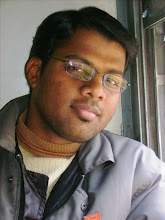A small discussion with my dad regarding the worsening of sex ratio in India… It took thirty minutes for him to elucidate but thirty hours for me to understand..!!
Here it goes:
RAGHU: Girls dominating the SSLC and PU results yet again and the child sex ratio has dropped from 927 to 914 girls per thousand boys.. Two extremes..!!! Any comments..???
DAD: The population Census survey 2011 has put question marks on the policies of the successive governments in the country. The survey says, Indian girls are vanishing despite the improvements in the sex ratio and literacy rates among them. The sex ratio figures reflect a depressing and growing trend among even the middle-class Indians to abort girl children, and a long-continued tradition among India’s vast underclass to nourish their boys and neglect, even abandon or kill, their baby girls. Boy children are still seen as the only security against an old age spent in penury, while a girl child is a drain on the household, who will require an expensive dowry.
The Census is the sole data base in the country that the government uses to formulate its policies. The survey comes out with a database on demography, economic activity, literacy and education, housing and household amenities, urbanization, fertility and mortality, social structure, language, religion and migration. Disappearance of the girl child is a matter of grave concern today. The population survey reaffirms a fact, which is so disturbing that it has cast a blot on the country. Girls seem to have no place in the so-called country’s growth story.
Though the southern states, Kerala, Andhra Pradesh, Karnataka, and Tamil Nadu, all have stronger sex ratios when compared to the national average of 914, they are worse off when compared to 2001. This pattern continues although the government has prohibited hospitals from disclosing the gender of an unborn child. Parents abort female fetuses and murder young female children for financial reasons. Incidents like this occur more frequently in the better educated and the richer Indian states, including Punjab and Gujarat. Even the Capital city of the country is not free from the bias against the girl child.
RAGHU: Are we really a nation that so hates its female population that, despite being aware of what the absence of women can mean for any society, we continue to kill them even before they are born?
DAD: Many parents still prefer to have male children, since men are traditionally the breadwinners in society. Men also perpetuate the family name and having boys relieves families of the expense of providing dowries for girls and protecting their virtue.
Therefore despite laws against pre-natal tests for determining the sex of a child, the practice of aborting female foetuses is still widespread throughout the country, with many parents prepared to pay for illegal abortions carried out by private doctors. The fact that female foetuses continue to be aborted in significant numbers can clearly be seen in the findings of the latest census. It shows that sex determination continues to be practiced robustly and rampantly. As is sex discrimination — girls are given less food, less health care, less education and even less affection. Also, it seems policies for the girl child haven’t done much to improve the situation.
MORAL:
The truth is that a country that so devalues its women does not deserve to pride itself on its economic growth, if it’s a growth built on the mass murder of its girl children
